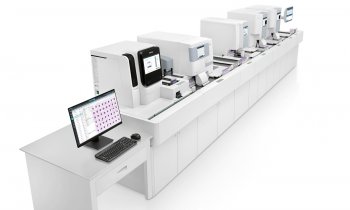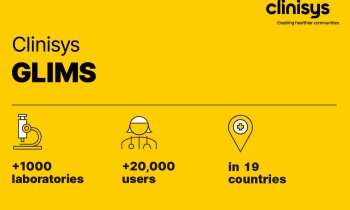Trauma networks ensure effective cooperation
Improved cooperation, a database for artificial joints, antibiotics against pathogens – orthopaedic specialists and surgeons are banking on different ways of increasing patient safety.
Report: Susanne Werner
Some 30-35,000 people are severely injured in accidents every year in Germany, and they all need instant competent care. To ensure this, the German Trauma Society (DGU) has initiated the development of trauma networks in many areas of the country. Meanwhile, there are 22 networks across the nation where members of the entire rescue chain jointly prepare for emergencies.
The trauma networks were among central topics this October at the German Congress of Orthopaedics and Trauma Surgery in Berlin, an event attended by about 12,000 specialists. Also discussed were the new endoprosthesis register and new ways to prevent infections during surgery. Statistics show two mass accidents or disasters, involving at least 10-100 fatalities and between 50 and 100 injured in need of immediate help, occur annually in Germany. Trauma surgeons, specialists in disaster medicine, anaesthetists, paramedics and members of the armed forces are then tasked with making the right decisions within minutes and with optimally tending affected patients. This also requires optimum networking of different treatment locations as well as clearly defined workflows. These deployments are prepared and regularly simulated for training purposes in the context of the trauma networks so that the injured and severely injured can be treated quickly and comprehensively.
The first step for hospitals aiming to set up trauma networks is to agree on their cooperation in emergencies. They carry out a selfevaluation to check which competencies and services they can contribute towards the developing network and where possible gaps might occur. In a second step, hospitals negotiate respective cooperation contracts and work out in quality circles what the efficient course of action at the emergency sites should look like and what problems might occur in the process. ‘Trauma networks ensure cooperation between hospitals and counteract the current healthpolitical trend that’s more suited to stoke the competition between hospitals,’ said DGU president Professor Tim Pohlemann MD. Meanwhile, he added, those in charge of nationwide networks are now well prepared for larger accidents, with up to 500 injured patients. The number of fatalities following large accidents has been halved over the last 25 years through more efficient and faster surgical care of light to severely injured patients.
The joint database
The development of the endoprosthesis register in Germany is being carried out to improve patient safety and quality of care. After all, artificial hip or knee implants are among the most common forms of surgery in this country – around 400,000 patients were fitted with an artificial joint in 2009 and around 35,000 of these had replacement surgery in the same year.
Therefore, the German Association of Orthopaedics and Orthopaedic Surgery (DGOOC) has taken the initiative in partnership with the AOK Federal Association, the Association of Health Insurers, prosthesis manufacturers and the Federal Office for Quality Assurance at the Institute for Quality and Patient Safety (BQS), to set up a central database. The main objective of the endoprosthesis register is to ensure future high quality care, to identify clearly the reasons for the replacement of a recently fitted joint and reduce this need in the long term. The database will capture hospital billing data and data on implants collated under consideration of data
protection guidelines and will match and compare this information with product data supplied via a database provided by the manufacturers. The test phase to check the data structure and transfer has already begun in selected hospitals.
An enhanced pilot phase will start at the beginning of 2012, and general data capture will begin in the second quarter of 2012. The first results are expected towards the end of 2013. ‘The outstanding system we now have at our disposal will constitute the best collation of data available worldwide within a few years’ time,’ predicts Professor Dieter Kohn MD, President of the German Association of Orthopaedics and Orthopaedic Surgery (DGOOC).
20.12.2011










